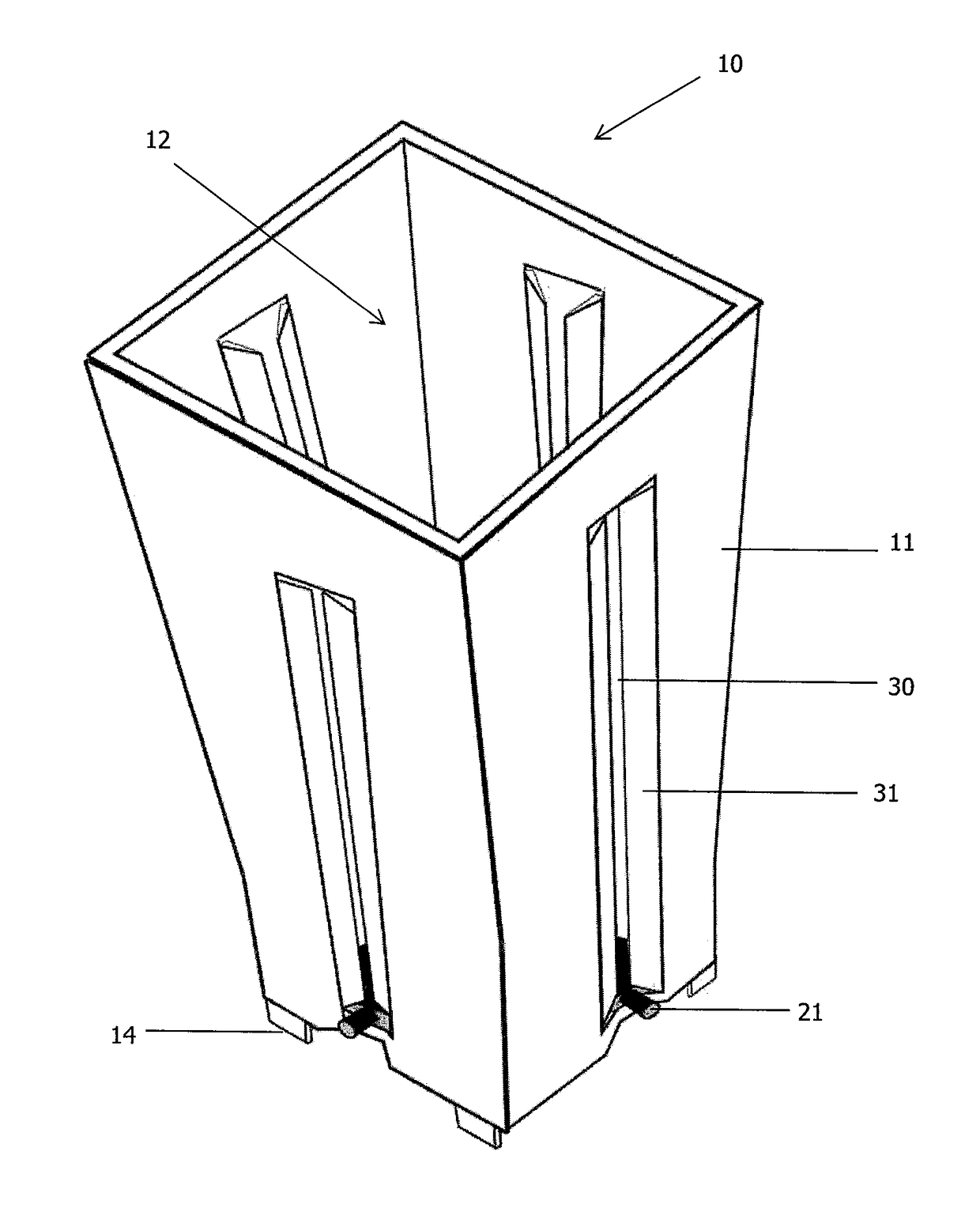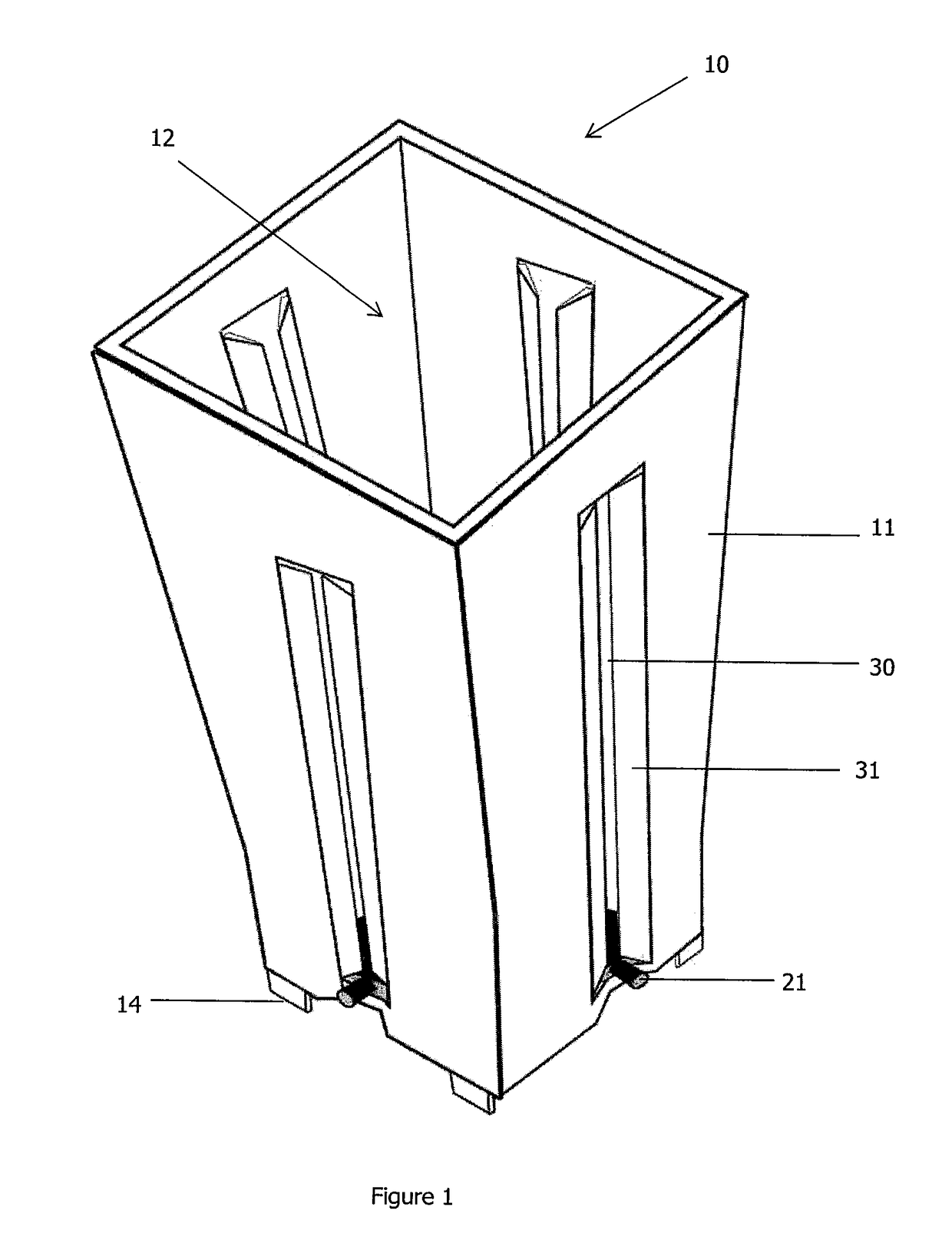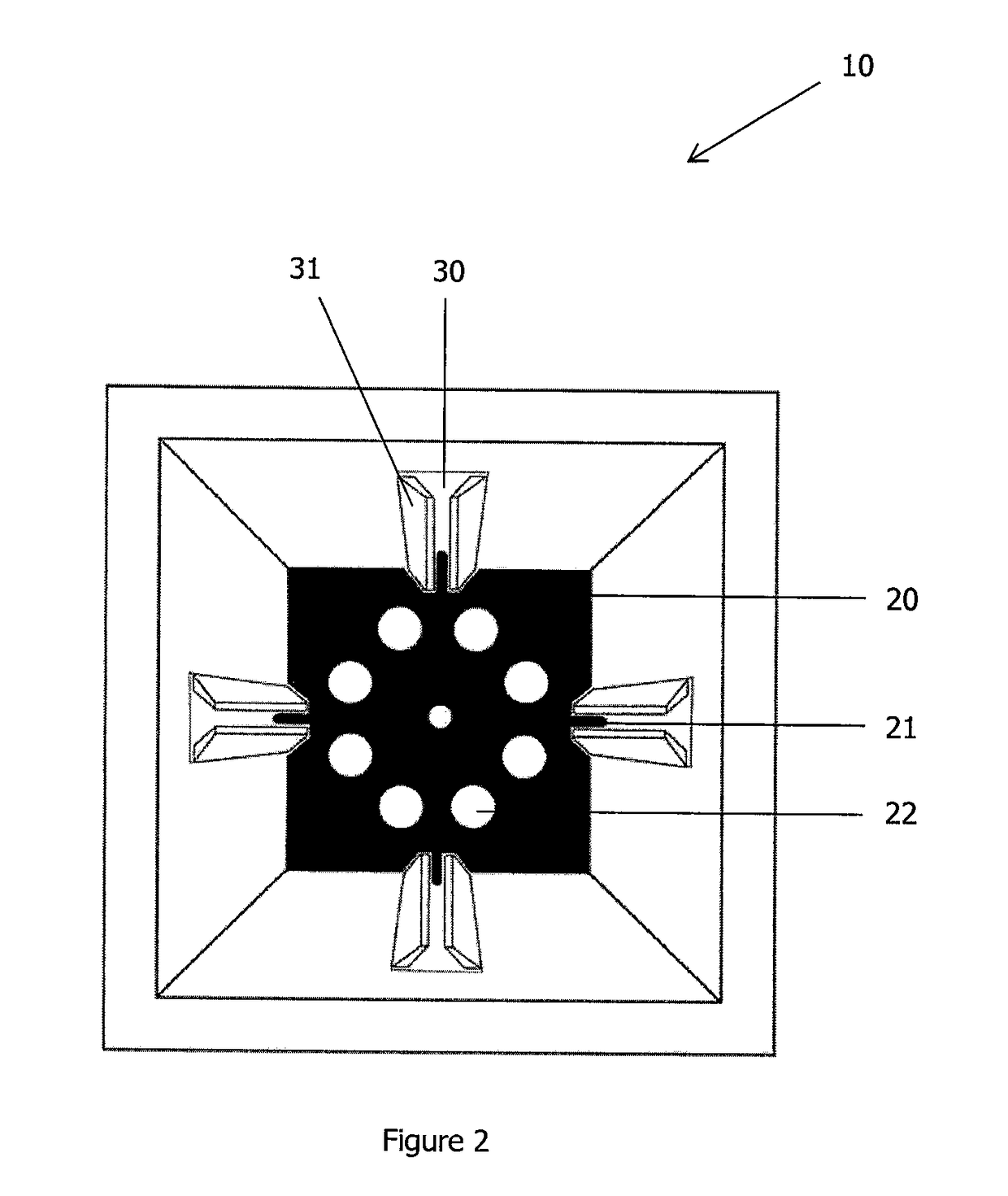Plant cultivating container
a technology for cultivating containers and plants, applied in the field of plant cultivating containers, can solve the problems of loosening of growing medium and damage to roots, and achieve the effect of reducing root damag
- Summary
- Abstract
- Description
- Claims
- Application Information
AI Technical Summary
Benefits of technology
Problems solved by technology
Method used
Image
Examples
Embodiment Construction
[0031]The plant cultivating container of this invention mainly comprises a hollow cell 10 having a vertically-movable base 20.
[0032]As shown in FIG. 1, the plant cultivating container has a relatively vertical configuration and is a generally upright container comprising a hollow cell 10. The container may be of any suitable shape and generally comprises side walls 11, a base 20 and an open top 12. The hollow cell 10 may be uniformly shaped throughout its height, or it may have a tapered configuration. The tapered configuration of the hollow cell 10 may be tapered towards its base 20 or top 12, i.e. downwardly or upwardly tapered. As shown in FIG. 1, the plant cultivating container may be an inverted frustopyramidal shaped hollow container with four side walls 11, an open top 12 and a base 20 with the top 12 being wider than the base 20.
[0033]The plant cultivating container may be made of any suitable durable and non-rigid material such as any kind of suitable plastic, for example p...
PUM
 Login to View More
Login to View More Abstract
Description
Claims
Application Information
 Login to View More
Login to View More - R&D
- Intellectual Property
- Life Sciences
- Materials
- Tech Scout
- Unparalleled Data Quality
- Higher Quality Content
- 60% Fewer Hallucinations
Browse by: Latest US Patents, China's latest patents, Technical Efficacy Thesaurus, Application Domain, Technology Topic, Popular Technical Reports.
© 2025 PatSnap. All rights reserved.Legal|Privacy policy|Modern Slavery Act Transparency Statement|Sitemap|About US| Contact US: help@patsnap.com



